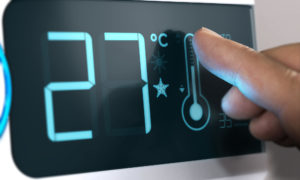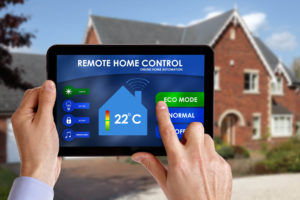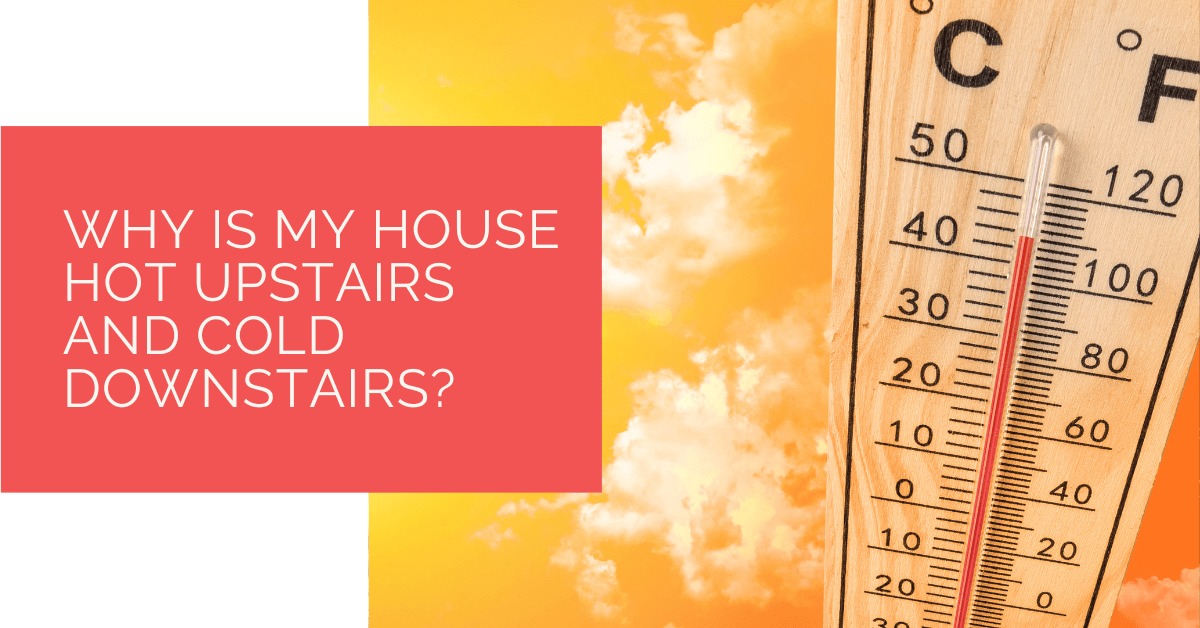Even though your home has central heating and cooling, it will feel different when winter comes. If you live in a house with more than one floor, the basement might feel colder than the floors above it. You may wonder why that’s happening.
Well, it is not just your mind playing tricks on you. There’s a good reason for this, and there are some things you can do to make your home’s temperature more even. Plus, it could help your air conditioning system or heater use less energy.
It’s easy to figure out why it’s hot upstairs and cold downstairs. Do you remember how dense air is or how much it weighs from science class? Who knew that physics would be helpful here?
Contents
Key Takeaways
- Cold air is denser than hot air, causing upstairs to be warmer and downstairs colder in a multi-story home during winter, creating a temperature difference of 8 to 10 degrees.
- Check for issues like leaky ductwork, dirty air filters, and excessive heat sources to address uneven temperatures. Consider hiring professionals to optimize your HVAC system and use zoning and attic insulation to regulate temperatures efficiently.
- An energy assessment and simple measures like using LED bulbs, window films, and choosing the right thermostat can further improve your home’s temperature balance and energy efficiency.
So Why Is It Warmer Upstairs than Downstairs?
Because cold air is denser than hot air, it sinks while hot air rises. In the winter, this is why it can be so cold downstairs while it’s nice and warm upstairs. The temperature difference between the second and first floors of a typical two-story home is between 8 and 10 degrees.
But this isn’t everything. There could be several other things that make it hard to control the temperature, such as:
- The ducts have holes that let the air out.
- It’s hard for the air to move around.
- The ducts are out of order.
- The vents and/or ducts are the wrong size.
- Most of the time, both people and the environment are to blame. If different temperatures are found on the same level, something is probably wrong with your HVAC system.

What Could You Do?
Before calling in the professionals, make sure you check your systems yourself. Understanding the heating and cooling in various rooms is often an issue you can resolve. Here are several things to check before calling in a professional.
Leaky Ductwork
Your walls, attic, or under the floors have ducts that bring cooled or heated air to your living area.
Leaky ducts let air escape from the air system before it gets to the needed room. It’s a waste of money. You’re paying to heat and cool the air, but the air leaks out before it can get to every room.
To resolve this, turn on your air conditioner and go to where the ducts are to check them. Move the insulation away from the ducts and look for the joints. You would feel for air leaks by running your hand along the joints. If you feel the air, tighten your joints and then use tape to seal them.
Air Filter Replacement
Even though the air filter seems fine, you may have trouble with air flow if you don’t clean or replace them often. Over time, the air filter collects dust particles and dirt. If that happens, less air will move through the room. To resolve this, clean the filters each month and swap disposable filters every one to three months.
Cut Down on Heat Sources
Your second floor will be warmer than your first floor, so raising the temperature further is not necessary.
Do not leave any lights on when you’re not using the second floor. Use hair dryers and other heat-making appliances as little as possible. Also, make sure you use your window shades in a smart way to keep the sunshine out of the second floor.

Ask for Professional Help
Even if, after trying all of these things, you find your house to have uneven temperatures, it is time to call in the professionals. Professional help at this stage would be more efficient and help you save some money in the long run. Why work harder when you can work smarter?
Get the Fan Going
To keep the air moving in your home, turn to the fan setting on your thermostat. Change the fan’s setting from “auto” to “on.”
A ceiling fan will circulate the air around your home, which will assist in maintaining a consistent temperature throughout.
Zoning Areas
Divide your place into zones, like the upstairs and downstairs. This way, you can heat and cool the place at different temperatures in each zone.
It is advised to hire a professional worker to set up zones in your home. With a conventional system or by adding ductless AC units, technicians achieve this goal. There are also mini-split heat pumps that don’t have ducts that can both warm and cool your home.
But you can try to achieve a similar effect by closing some of the vents on the floor above in the summer. By doing this, your air conditioner will send more air upstairs. In the winter, try doing the opposite. Close more vents up to push more warm air down.
If an HVAC pro sets up a climate zone system, it will function best. This system has motorised dampers inside your ductwork that gradually open and close to send extra cool air or warm air wherever needed. You can always be comfortable with these zone control systems in every room.
Check Attic’s Thermal Efficiency
Many things could cause uneven temperatures in the attic, especially when the air conditioning system is operating in the summer. If the attic isn’t well insulated, conditioned air could leak up, making the floor above hotter than you’d like.
If the attic’s vents are blocked, it would be harder for air to get in and out, making the space hotter. If you fix the insulation and clear out any clogged vents, your upper floors can keep cool air in for longer. You could also add fans to your attic to make it even cooler.
Energy Assessment
A home energy assessment tells you many useful things like the openings in the home’s enclosure that are causing problems or if your HVAC system is designed well, etc. It can also tell you how to save energy by using less.
An auditor might find a number of factors that you would never have considered looking for.
The good news is that many of these problems are easy to fix.

Additional Measures
Here are some small steps to maintain a good temperature balance in your house.
Light Bulbs
In summer, it will be harder to deal with the heat if you have incandescent light bulbs that get so hot that they burn. LEDs are comparatively cooler than incandescent light bulbs and much cooler than compact fluorescent light bulbs (CFLs).
Changing a light bulb is a simple task that makes your room feel cooler and gives you many benefits.
Adding a Film on Windows
Window films help in blocking heat flow, which keeps hot air outside in summer. This makes it easy for your air conditioning system to function effectively. This is even more beneficial in houses with old or less expensive windows that are not very good at blocking UV rays.
Choosing the Right Thermostat
Your home’s central heating and cooling system, whether it’s a furnace or central AC, is controlled by a thermostat.
An efficient thermostat is essential to keep your home comfy because it lets you check and change the temperature in each room. Some thermostats can even help you save money over time.
Heat Pump Source: Reliable Heating and Cooling Solutions
At Heat Pump Source, we take pride in our unwavering commitment to serving the UK with top-tier HVAC solutions. From the efficiency of heat pumps and the cool relief of air conditioning to the warmth of boilers, radiators, and underfloor heating, our dedicated team is always at the forefront of innovation. We understand the unique needs of every household and business, and we strive to provide dependable health and cooling products and services that are tailored just for you. Ensuring your comfort and satisfaction is our utmost priority. Whether you have questions, need guidance, or require support, we’re always here to assist. Please don’t hesitate to contact us; we’re eager to be of service.
Wrapping Up
Updating heating, ventilation, and air conditioning (HVAC) system often involves a number of difficult and technical factors. The attraction of even heating, though, could not be more straightforward. These techniques provide a fundamentally distinct temperature control experience, pervasive, all-rounder warmth—while using less energy and costing lesser pounds.
About the Author
At Heat Pump Source, our articles are the product of a collaborative effort among a team of highly skilled HVAC experts. Our dedicated professionals, hailing from diverse backgrounds in heating, ventilation, air conditioning, and refrigeration, contribute their extensive knowledge and experience to every piece of content. This multidisciplinary approach ensures comprehensive coverage. Our commitment is to deliver authoritative, reliable, and tailored advice to meet the unique needs of every household and business across the UK.

